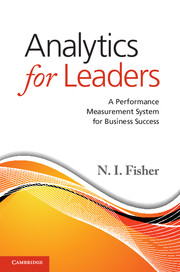Book contents
- Frontmatter
- Dedication
- Contents
- List of exhibits
- Preface
- Acknowledgments
- 1 How’s your due diligence?
- 2 Introduction to the system
- 3 A framework for performance measurement
- 4 What is Stakeholder Value?
- 5 Adding Value for Customers
- 6 Adding Value for People
- 7 Adding Value for Partners
- 8 Adding Value for the Community
- 9 Adding Value for the Owners
- 10 What to report and how to report it
- 11 How to get started . . .
- 12 The Performance Measurement Framework: Assessment and adoption
- 13 Practical aspects of managing Stakeholder Value
- 14 Performance measurement for Small and Medium Enterprises
- Appendix Don’t be fooled by statistics
- References
- Index
10 - What to report and how to report it
Published online by Cambridge University Press: 05 December 2013
- Frontmatter
- Dedication
- Contents
- List of exhibits
- Preface
- Acknowledgments
- 1 How’s your due diligence?
- 2 Introduction to the system
- 3 A framework for performance measurement
- 4 What is Stakeholder Value?
- 5 Adding Value for Customers
- 6 Adding Value for People
- 7 Adding Value for Partners
- 8 Adding Value for the Community
- 9 Adding Value for the Owners
- 10 What to report and how to report it
- 11 How to get started . . .
- 12 The Performance Measurement Framework: Assessment and adoption
- 13 Practical aspects of managing Stakeholder Value
- 14 Performance measurement for Small and Medium Enterprises
- Appendix Don’t be fooled by statistics
- References
- Index
Summary
The best of seers is he who guesses well.
EuripidesFar better an approximate answer to the right question, which is often vague, than the exact answer to the wrong question, which can always be made precise.
John W. TukeyPREAMBLE: WHERE ARE WE GOING?
Recall (from Chapter 1) that our purpose is to describe a system for performance measurement that gives you the quantitative information that you need to help you run your enterprise. “Quantitative information that you need” means information that is:
timely
actionable – in a format (graphical or tabular) that facilitates decision-making
measures the right thing, the right way
clearly interpretable in terms of its limitations – degree of uncertainty in the measurement, possible biases.
And additionally, the information has to provide a concise overview of the health of your enterprise. So, what should be reported, and how should the reporting take place to make the most of this information?
CONCISE AND COMPREHENSIVE REPORTS
We are now in a position to identify the groups of measures that need to appear in monthly or quarterly leadership reports. The Board Value tree in Exhibit 9.2 identifies six groups of Attributes that need to be monitored, as shown in Exhibit 10.1, where “to be monitored” means that lead indicators are needed.
- Type
- Chapter
- Information
- Analytics for LeadersA Performance Measurement System for Business Success, pp. 117 - 134Publisher: Cambridge University PressPrint publication year: 2013



